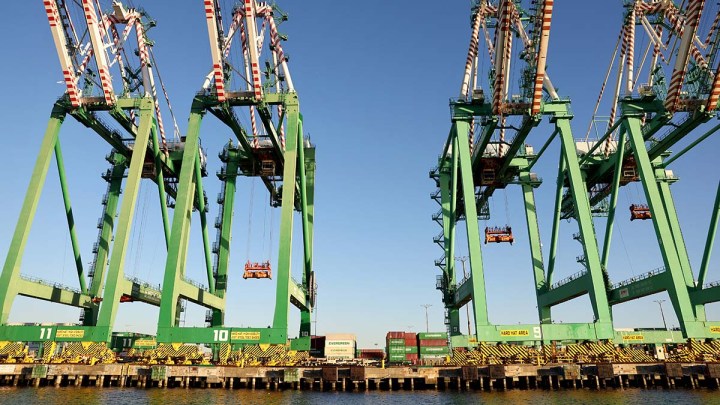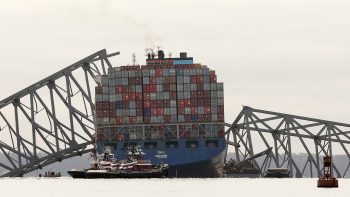
West Coast ports lost market share. Will they get it back?
West Coast ports lost market share. Will they get it back?

The paths so many goods travel as they cross the globe have changed, as have the ports where they arrive in this country.
Remember when there was a line, like, 100 ships long to get into the Port of Los Angeles? Well, there is no backup now. Container volumes at West Coast ports have fallen 10% since before the pandemic. But where do you imagine they might have gone?
That logjam of ships during the pandemic left a mark. Chris Jones, executive vice president of industry at Descartes Systems, a supply chain and logistics tech company, compared shipping volume in the first three months of 2019 to that of the first three months of this year.
Jones calculated that a million TEUs per year of shipping volume has moved from West Coast ports to Gulf of Mexico and East Coast ports.
TEUs measure trade volume — basically, one TEU is half of one of those giant shipping containers you see on boats. The point is, hundreds of thousands of those containers are coming to ports like Houston and New York instead of L.A. and Seattle.
“What happened was the East Coast ports went up 3%, but the Gulf ports went up 43%,” Jones said.
This massive shift wasn’t all caused by the pandemic. Labor disputes on the West Coast have frightened shippers and retailers, who worried that a strike might break supply chains all over again. But this shift away from the West Coast was actually happening even before all that.
“U.S. West Coast had roughly 50% of market share for all U.S. imports back in 2016-17, and it has been dropping ever since steadily,” said Nerijus Poskus, vice president and global head of ocean freight with Flexport.
The West Coast’s market share is now 42%, he said. Over time, global manufacturing has changed and so, therefore, have shipping routes. “A lot of manufacturing has been shifting from China to Southeast Asia to the Indian subcontinent, as well as somewhat Latin America,” Poskus said.
But even if the supply chain problems are gone now and even if those labor disputes resolve, would those containers go back west?
“So many networks have been put in place, and we’ve made these kind of changes,” said Jessica Dankert with the Retail Industry Leaders Association. “I don’t know that we’ll see that same level of volume return to the West Coast.”
A lot of retailers are still rethinking their routes, she added.
There’s a lot happening in the world. Through it all, Marketplace is here for you.
You rely on Marketplace to break down the world’s events and tell you how it affects you in a fact-based, approachable way. We rely on your financial support to keep making that possible.
Your donation today powers the independent journalism that you rely on. For just $5/month, you can help sustain Marketplace so we can keep reporting on the things that matter to you.

















